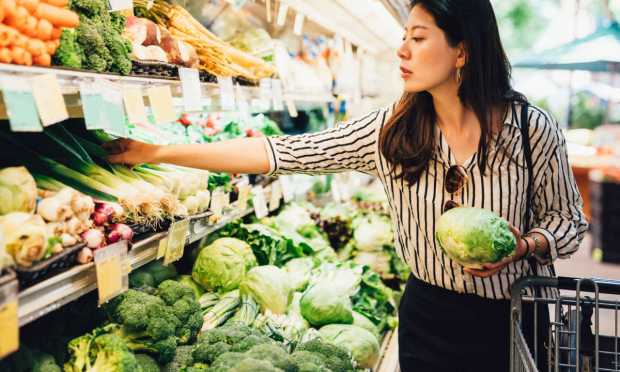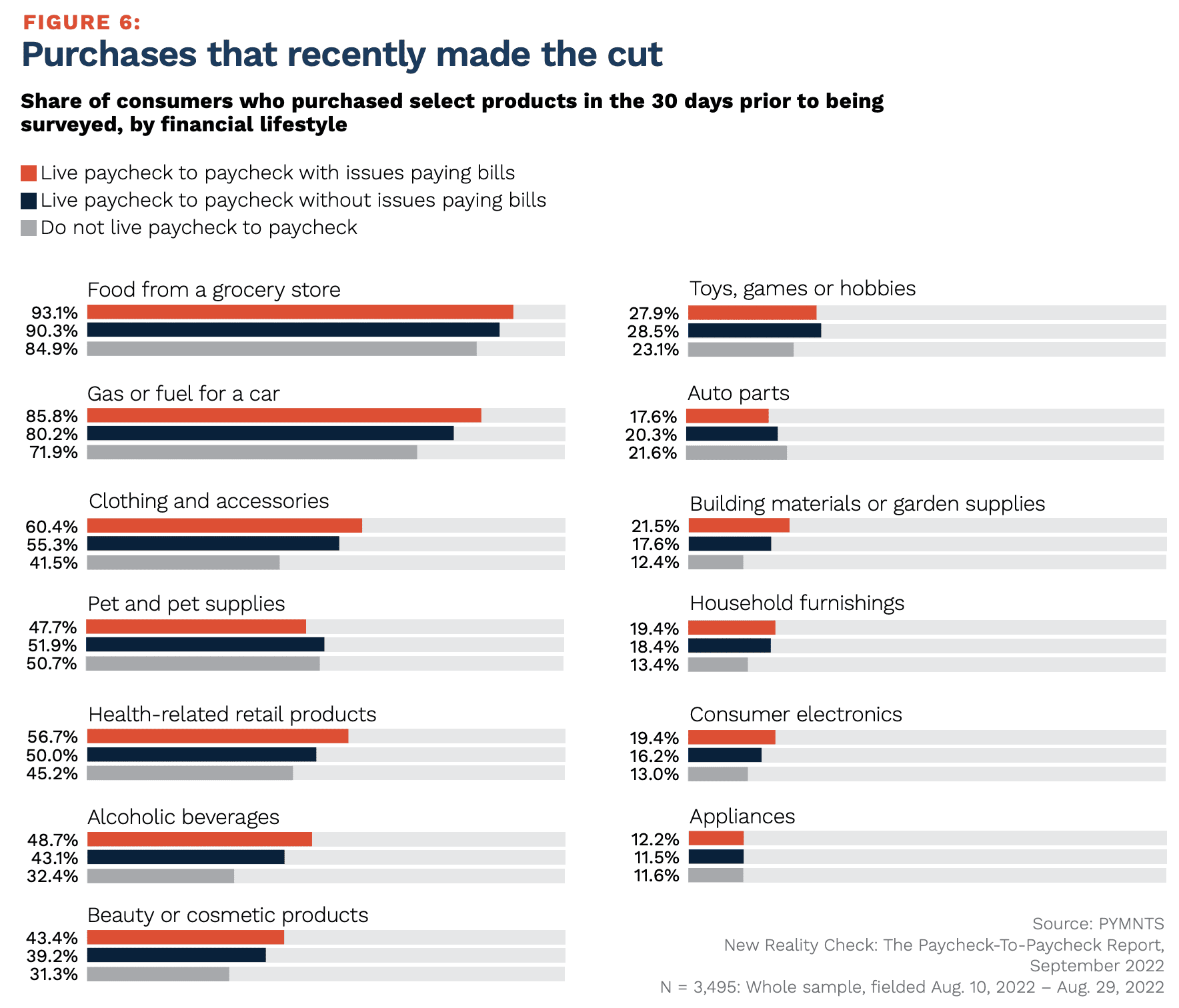Grocery Remains Resilient as Consumers Cut Spending

As consumers cut spending amid economic challenges, grocers benefit from the necessity of their products.
By the Numbers
Research from PYMNTS’ study “New Reality Check: The Paycheck-To-Paycheck Report: 2022 Year In Review Edition,” created in collaboration with LendingClub, which draws from 12 months of surveys representing insights from a total of 45,700 U.S. consumers, finds that grocery purchasing is resilient.
In the 30 days prior to being surveyed, 93% of those who live paycheck to paycheck with issues paying bills, 90% of those who do so without issues paying bills and 85% of those who do not live paycheck to paycheck made a grocery purchase.
Presumably, the lower share of the latter suggests that many of these consumers continue to rely on dining out, while consumers with less of a financial safety net continue to rely on grocers.
These shares exceed the portion of consumers who purchased any other kind of product, including other necessities such as gas or fuel for a car. That is, as prices skyrocket, grocers have the advantage of offering products that are indispensable.
“Consumers living on tighter budgets allocate a disproportionate share of their spend to groceries, and rising grocery prices are increasingly eroding their ability to save,” the study notes.

Indeed, data from the U.S. Bureau of Labor Statistics (BLS) revealed that in November, the most recent month on record, grocery prices increased 12% year over year, well above the all-item inflation rate of 7.1%
The Data in Action
Not only do consumers continue to purchase groceries, but they are also shifting away from other kinds of food spending such as restaurant dining and toward grocery shopping.
Sean Connolly, CEO of consumer-packaged goods (CPG) company Conagra Brands, spoke to this trend on a call with analysts Thursday (Jan. 5) discussing the company’s second-quarter fiscal 2023 financial results.
“There was a trade-down into at home eating during COVID, and that has not fully reverted to away-from-home, because the prices of away-from-home have gone up so high that it’s a better value to continue to eat in-home, as people are trying to stretch their household balance sheet,” Connolly told analysts.
